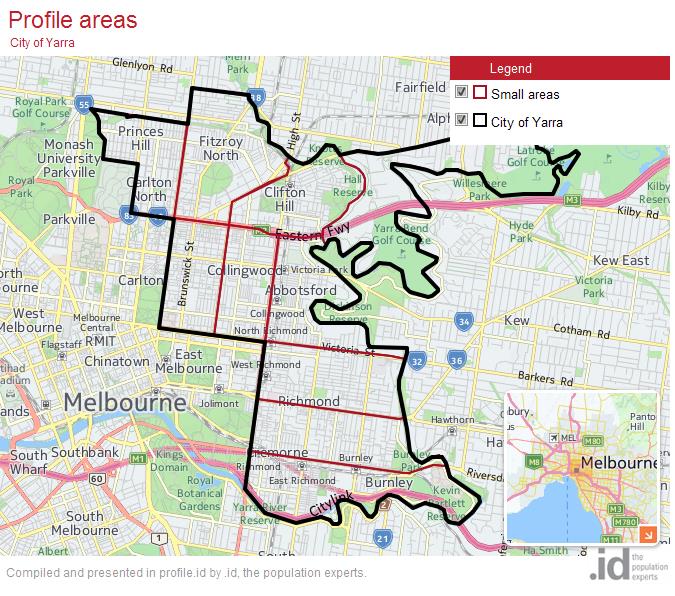What are the factors that contribute to the overall heart health – good or bad – of an area? In a recent blog by Glenn – Predicting your area’s future heart health, he outlined the work we did with Heart Foundation Victoria. We put together a series of fact sheets on heart disease to help raise awareness of the rate of heart disease and lifestyle risk factors in local communities and these are now all available online here.
To tie in with the aims of the project, I’m going to look at a LGA with good heart health and one with bad heart health, and explore the factors behind these outcomes in this blog and the next. First off, I’d like to look at the City of Yarra which has very good heart health outcomes.
The heart health profile of the City of Yarra

The City of Yarra is a cluster of inner city suburbs located immediately north-east of the Melbourne CBD. The rate of heart attack in the area is just 11.8 per 10,000 people, one of the lowest in the state. It is 31% lower than could be expected in an area with a similar age structure. The factsheets also outline forecast rates of heart attack, as the Yarra population ages. By 2036 the rate of heart attack is forecast to rise to 15.2 per 10,000 people.
Similarly, the rate of angina, which is a long term heart disease, is very low in the City of Yarra. It is also lower than expected for a similar area. The forecast rate indicates only a small increase, to 6 per 10,000 people.
Heart failure and cardiac arrest have rates very close to the Victorian average, and while often linked to lifestyle risk factors, these conditions can often be caused by other things such as genetic disease and accidents.
So why are heart health outcomes in Yarra so good? Mostly it’s due to their low level of lifestyle risk factors. The rate of obesity in the area is much lower than the Victorian average. The rates of those who don’t meet physical activity guidelines and drink soft drink daily are also lower than average. However, there are high rates of smoking in Yarra, especially amongst males. This is not uncommon, men are more likely to smoke than women. In Yarra, it may also be a cultural thing. Yarra is home to large Chinese and Vietnamese populations, where smoking is culturally acceptable for men. Some in the office dared to suggest the higher smoking rate was due to the increasing number of ‘hipsters’ in the area.
So what is it about the City of Yarra that encourages healthy lifestyles? It’s inner city location may be an advantage. Access to public transport is very good, so many residents would utilise that, generally including a walk to and from the station or stop.
Inner city locations also attract younger populations, and increasingly in Melbourne, those with higher incomes. These people generally live active lifestyles and have the disposable income to spend on health and fitness activities – eg. gym memberships.
Despite the gentrification that is occurring in the City of Yarra, there are still pockets of disadvantaged population, especially around social housing complexes in Fitroy, Collingwood and North Richmond. Much research has showed that those who are socially disadvantaged in some way are likely to have poorer health outcomes. This research has developed into the public health theory of the social determinants of health.
The City of Yarra also has a comprehensive health strategy which you can find on their website. It has been strongly influenced by the ideas of the social determinants of health. This helps keep heart health and general health outcomes in the City of Yarra better than the state average.
You may like to access City of Yarra’s heart health factsheet here.
For more information about the heart health of your area, contact us at info@id.com.au. The heart health factsheets for all Victorian local government areas are now all available online here.










